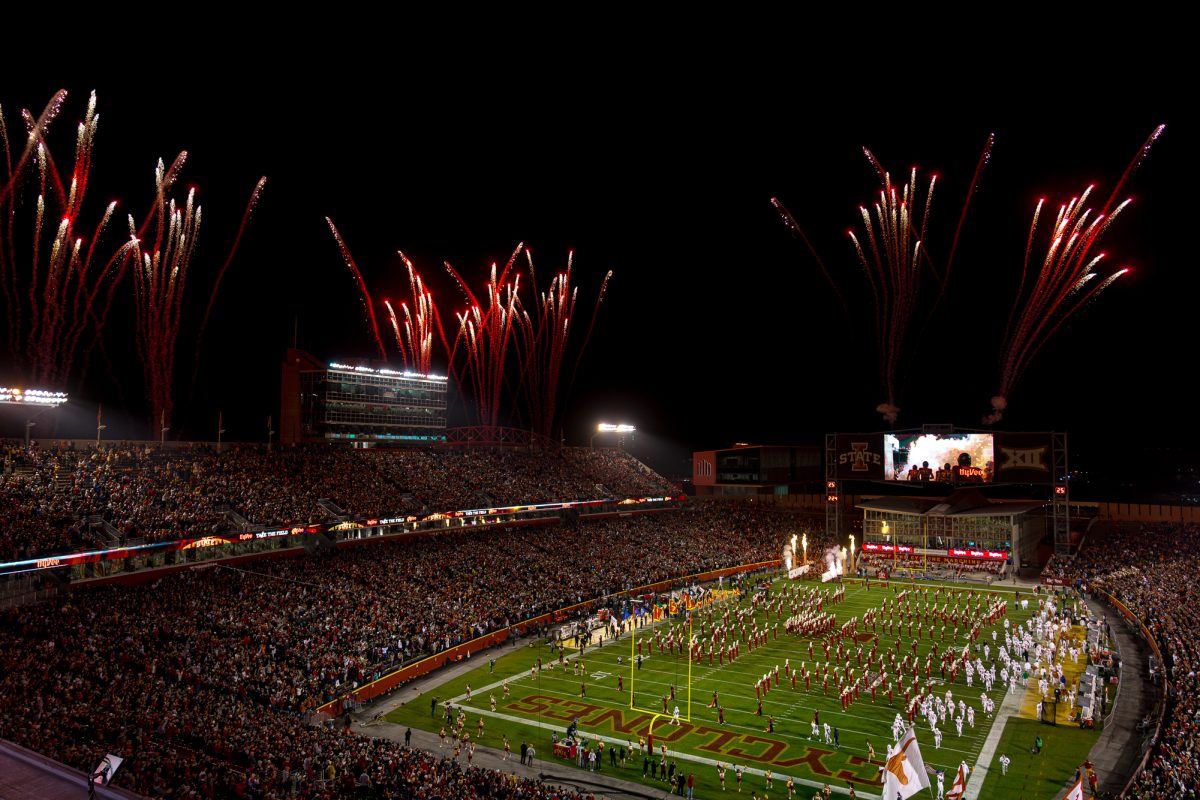Annual NCAA financial reporting from the Iowa State University Athletic Department shows contributions, sport-specific revenues and expenses and changes from the previous fiscal year.
The athletic department saw an increase in revenue and increased contributions amid the era of CYTown development.
See below the revenues and expenses for the athletic department during fiscal year 2023, July 1, 2022 through June 30, 2023:
Funding findings
The department’s fiscal year 2023 total revenue of $115.58 million is a 3.86% increase compared to fiscal year 2022 (July 1, 2021 through June 30, 2022), when the department had a revenue of $111.28 million. Fiscal year 2021 had revenue of $72,046,100 (July 1, 2020 through June 30, 2021).
The department reported no direct institutional support and no direct state or other government support.
Ticket revenue accounted for more than $21.66 million, including $16.19 million from football. This total does not include prices paid in excess of face value to obtain preferential or priority seating.
The department received $3.92 million in contributions to football and contributions totaling $29.08 million. Football-designated contributions were up from $3.27 million in fiscal year 2022.
Contributions for specific sports include amounts received above face value for tickets; amounts received from individuals, corporations, associations, foundations, clubs or other organizations; funds contributed by outside contributors for the payment of debt service and lease payments or rental fee expenses for athletic facilities in the reporting year.
Seven programs were reported as receiving no contributions to the specific program while wrestling reported $38 in contributions. Nearly $25 million was contributed but not related to a specific team.
Football had the largest operating revenue with $53.24 million and was 46% of the $115.58 million in total revenues. Following football, the operating revenues for men’s basketball was 13.94%, or $16.12 million, of total operating revenue and women’s basketball was $881,255, or 0.76%.
Operating revenues not allocated by gender totaled $42.7 million. The operating revenues for men’s sports were $69.94 million in 2023, down from $72.13 million in 2022 and for women’s sports were $2.93 million in 2023, up from $2.78 million in 2022.
Women’s sports expenses increased from $17.35 million in 2022 to $20.28 million in 2023, and men’s expenses are up to $42.24 million in 2023 from $41.44 million in 2022. Expenses not allocated by gender were $52.99 million.
Men’s teams spent $1.12 million on recruiting in fiscal year 2023, down from $1.16 million in fiscal year 2022, while women’s teams spent $473,909, up from $461,306 in fiscal year 2022.
The men’s basketball team spent $290,768 on equipment, uniforms and supplies, over $100,000 more than the women’s team, which spent $186,826. The football team spent $2.1 million in the same category.
Football made more money than any other sport on ticket sales, selling $16.19 million worth of tickets to the public, faculty and students, $1.32 million less than fiscal year 2022. Men’s basketball reported $4.49 million in ticket sales, and women’s basketball sold $611,041 in tickets, both up from the year prior.
Student fees accounted for 1.54%, or $1.78 million, of the department’s budget, which equals about $60 per enrolled student during the fall 2022 semester.
Data from the fiscal year 2023 and 2022 NCAA financial support report
Revenues
Revenue source: amount of revenue, change from FY22.
Media rights: $24.8 million, -8.42%
Ticket sales: $21.66 million, -5.43%
Contributions: $29.08 million, 30.88%
Bowl-generated revenue: $15.66 million, 10.89%
“Other operating revenue”: $9.15 million, 6.83%
Expenses
Expense: expense amount, change from FY22.
Student-athlete student aid: $10.24 million, 4.08%
Coaching salaries, benefits and bonuses: $19.69 million, 2.51%
Support staff and administrative salaries and benefits: $18.74 million, 14.57%
Recruiting: $1.59 million, -2.04%
Team travel: $7.55 million, 32.73%
Direct overhead and administrative expenses: $21.82 million, -5.52%
Non-travel student-athlete meals: $4.2 million, 28.62%
Athletic department on report
Direct overhead and administrative expenses include administrative and overhead fees charged by the university to athletics, facilities maintenance, security, risk management, utilities, equipment repair and other administrative expenses.
Chris Jorgensen, senior associate athletics director for operations, said Jack Trice Stadium is the most expensive building to maintain because "expense is really driven by building size and age."
“Maintenance costs are driven by building size and age, so the older the building, you tend to have higher maintenance costs,” Jorgensen said.
Team travel expenses increased 32.73% in fiscal year 2023 compared to fiscal year 2022, increasing from $5.69 million to $7.55 million.
Jorgensen said the increased number of road trips during the fiscal year, including utilizing air travel for more events, drove the increased costs for team travel.
According to Jorgensen, the 2023 fiscal year budget was not affected by the 2022 football team not making a bowl.
“We try to operate bowls at a break-even perspective,” Jorgensen said. “Essentially we’re given a revenue allotment from the Big 12 conference, a revenue allotment that covers our participation in the bowl and is intended to cover travel costs.”


















